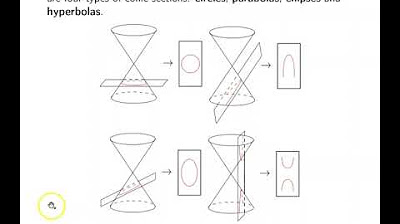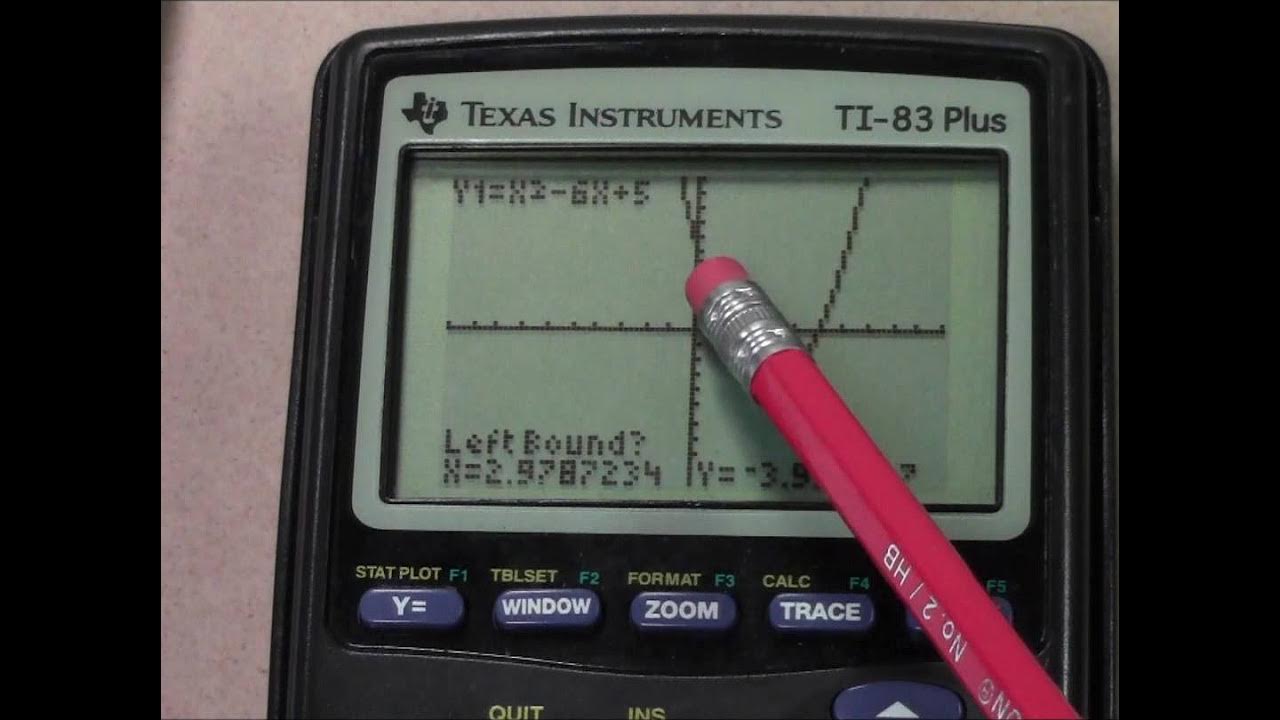STANDARD FORM OF THE EQUATION OF A PARABOLA WITH VERTEX AT THE ORIGIN || PRE-CALCULUS
TLDRThis educational video provides an in-depth exploration of the standard form equations of parabolas with vertices at the origin. It covers four primary orientations: parabolas opening upwards, downwards, to the left, and to the right, with a focus on their axes of symmetry, focal distances, and directrix equations. The instructor illustrates each concept with examples, demonstrating how to derive the vertex, focus, and directrix from the equation. The video is a valuable resource for students seeking to understand the geometric properties and algebraic representations of parabolas.
Takeaways
- 📚 The standard form of a parabola's equation with its vertex at the origin can be represented as \( y^2 = 4ax \) or \( x^2 = 4ay \), depending on the direction in which the parabola opens.
- 📐 If the parabola opens to the right (positive \( a \)), the axis of symmetry is vertical and given by \( x = 0 \), and the focus is at \( (a, 0) \).
- 📏 For a parabola opening to the left (negative \( a \)), the axis of symmetry is also vertical, but the focus is at \( (-a, 0) \).
- 🔄 When the parabola opens upward or downward, the axis of symmetry is horizontal, with \( y = 0 \).
- 🔢 The value of \( a \) determines the direction and the width of the parabola's opening. A positive \( a \) opens right or upward, while a negative \( a \) opens left or downward.
- 🔍 The focal distance, or the distance from the vertex to the focus, is given by \( |a| \).
- 📐 The directrix of a parabola is a line that is perpendicular to the axis of symmetry and is used to define the parabola's shape.
- 📈 The length of the latus rectum, which is a chord of the parabola that passes through the focus and is perpendicular to the axis of symmetry, is \( 4a \) for parabolas opening right or left, and \( 4a \) units for those opening upward or downward.
- 📝 To find the focal distance and directrix from a given standard equation, manipulate the equation to solve for \( a \) and then apply the properties of the parabola.
- 📊 The vertex form of a parabola is useful for quickly identifying key features such as the vertex, axis of symmetry, and direction of opening.
- 📐 The axis of symmetry and the directrix are key to sketching the graph of a parabola and understanding its properties.
- 📚 Understanding the standard form of a parabola's equation is fundamental for further analysis in algebra and calculus.
Q & A
What is the standard form equation of a parabola with the vertex at the origin?
-The standard form equations of a parabola with the vertex at the origin are y² = 4ax, y² = -4ax, x² = 4ay, and x² = -4ay.
How does the parabola y² = 4ax open?
-The parabola y² = 4ax opens to the right.
What is the axis of symmetry for the parabola y² = 4ax?
-The axis of symmetry for the parabola y² = 4ax is horizontal, along the y-axis (y = 0).
How does the sign of the coefficient affect the direction the parabola opens?
-A positive coefficient in the equation y² = 4ax or x² = 4ay means the parabola opens to the right or upwards, respectively. A negative coefficient means the parabola opens to the left (y² = -4ax) or downwards (x² = -4ay).
What is the focus of the parabola y² = 4ax?
-The focus of the parabola y² = 4ax is at (a, 0), where 'a' is the focal distance.
What is the directrix of the parabola y² = 4ax?
-The directrix of the parabola y² = 4ax is x = -a.
How do you determine the focal distance of a parabola given the equation y² = 4ax?
-To determine the focal distance 'a', use the coefficient 4a from the equation y² = 4ax. For example, if y² = 4x, then 4a = 4, so a = 1.
What is the axis of symmetry for the parabola x² = 4ay?
-The axis of symmetry for the parabola x² = 4ay is vertical, along the x-axis (x = 0).
How do you find the length of the latus rectum for a parabola?
-The length of the latus rectum is given by 4a, where 'a' is the focal distance.
How does the parabola x² = -4ay open?
-The parabola x² = -4ay opens downward.
What is the directrix for the parabola x² = 4ay?
-The directrix for the parabola x² = 4ay is y = -a.
What are the coordinates of the focus for the parabola x² = 4ay?
-The coordinates of the focus for the parabola x² = 4ay are (0, a).
What is the vertex of the parabola in the standard form equations given?
-The vertex of the parabola in the standard form equations y² = 4ax, y² = -4ax, x² = 4ay, and x² = -4ay is at the origin (0, 0).
How do you determine if a parabola opens upwards or downwards from its equation?
-A parabola with the equation x² = 4ay opens upwards if 'a' is positive and downwards if 'a' is negative.
Outlines
📚 Introduction to Parabola Equations
This paragraph introduces the topic of the video, which is discussing the standard form of the equation of a parabola with its vertex at the origin. It mentions the importance of liking and subscribing to the channel. The first standard equation presented is y^2 = 4ax, which represents a parabola opening to the right with its axis of symmetry along the x-axis. The video also discusses the orientation of the parabola and its axis of symmetry.
🧮 Focal Distance and Directrix
This paragraph delves into the focal distance and directrix of a parabola. It explains that the focal distance (a) is the distance from the vertex to the focus of the parabola. The directrix is a line perpendicular to the axis of symmetry that is used to define the parabola. The video provides examples of parabolas opening upward and downward, and how to calculate the focal distance and directrix for each case.
📐 Calculating Focal Distance and Directrix
This paragraph provides a step-by-step example of how to calculate the focal distance and directrix for a given parabola equation. It shows how to manipulate the equation to solve for the focal distance (a) and then use that to find the endpoints of the focus and directrix. The video demonstrates this process for the equation x^2 = -8y.
📈 Vertex Form and Orientation
This paragraph discusses the vertex form of a parabola equation and its orientation. It explains that the vertex form is y = a(x - h)^2 + k, where (h, k) is the vertex of the parabola. The video shows how the orientation of the parabola (whether it opens upward or downward) depends on the sign of the coefficient a. It also discusses the axis of symmetry and how it is determined based on the orientation.
🔍 Focus and Directrix Calculations
This paragraph provides more examples of calculating the focus and directrix for different parabola equations. It shows how to find the focal distance (a) and use it to determine the focus and directrix for parabolas opening to the right and left. The video demonstrates this process for the equations y^2 = 12x and y^2 = -1/2x.
📝 Summary and Conclusion
This final paragraph summarizes the key points covered in the video. It recaps the process of finding the focal distance, directrix, focus, and axis of symmetry for a parabola given its equation. The video emphasizes the importance of understanding the orientation of the parabola and how it affects these calculations. It concludes by thanking viewers for watching and encouraging them to like, subscribe, and hit the bell for more video tutorials.
Mindmap
Keywords
💡Parabola
💡Vertex
💡Standard Form
💡Axis of Symmetry
💡Focal Distance
💡Directrix
💡Focus
💡Equation of a Parabola
💡Quadratic Equation
💡Graph
💡Rectum
Highlights
Standard form of a parabola with vertex at the origin is y^2 = 4ax for a parabola opening to the right, and y^2 = -4ax for one opening to the left.
The axis of symmetry for a parabola opening to the right is the vertical line x = -a, and for one opening to the left it is x = a.
The focus of a parabola opening upward or downward is at (0, a) or (0, -a) respectively, and the directrix is y = -a or y = a.
For a parabola opening to the right, the vertex is at the origin (0,0), the focus is at (a, 0), and the directrix is the line x = -a.
For a parabola opening to the left, the vertex is at (0,0), the focus is at (-a, 0), and the directrix is x = a.
The focal distance (distance between vertex and focus) for a parabola opening upward or downward is given by f = 1/4a.
The length of the latus rectum (chord parallel to the axis of symmetry that passes through the focus) is 4a for parabolas opening upward or downward.
Example 1: For the equation x^2 = 4y, the parabola opens upward with a focal distance of 1 and directrix y = -1.
Example 2: For x^2 = -8y, the parabola opens downward with focal distance 2 and directrix y = 2.
Example 3: For y^2 = 12x, the parabola opens to the right with focal distance 3 and directrix x = -3.
Example 4: For y^2 = -(1/2)x, the parabola opens to the left with focal distance 1/8 and directrix x = 1/8.
The vertex, focus, directrix, axis of symmetry, and latus rectum can be determined for any parabola using its standard form equation.
The focal distance and latus rectum length can be calculated using the formula f = 1/4a and LR = 4a respectively.
The orientation (opening direction) of a parabola is determined by the sign of the coefficient 'a' in its standard form equation.
The axis of symmetry is always a vertical or horizontal line that passes through the vertex of the parabola.
The focus and directrix of a parabola are always on opposite sides of the vertex along the axis of symmetry.
The latus rectum endpoints are found at a distance of 2a from the vertex along the axis of symmetry.
This video provides a comprehensive understanding of the properties and relationships of parabolas with vertices at the origin.
Transcripts
Browse More Related Video

FINDING THE EQUATION OF THE PARABOLA | GRAPHING | VERTEX AT THE ORIGIN | PROF D

INTRODUCTION TO PARABOLA | GRAPHING | VERTEX AT THE ORIGIN | PROF D

Ch. 11.1 Parabolas

How to find the equation of a parabola given vertex and directrix | @ProfD

Quadratic Equations using a TI 83 Plus Graphing Calculator

STANDARD EQUATION OF PARABOLA TO GENERAL FORM
5.0 / 5 (0 votes)
Thanks for rating: